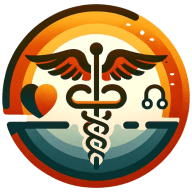What Are Examples of Cost-Saving Initiatives in Healthcare that Don't Compromise Care Quality?
Healthcare leaders are constantly balancing the scales of cost-efficiency and quality care, and we've gathered insights starting with a Clinical Director's success in establishing Behavioral Health Crisis Centers. Alongside expert strategies, we've included additional answers that offer a spectrum of innovative cost-saving measures without undercutting patient care. From leveraging telemedicine to investing in energy-efficient equipment, explore seven strategies that are making a difference.
- Establish Behavioral Health Crisis Centers
- Implement Just-in-Time Inventory
- Expand Telemedicine Services
- Negotiate Bulk Vaccine Purchases
- Outsource Medical Transcription
- Switch to Generic Medications
- Invest in Energy-Efficient Equipment
Establish Behavioral Health Crisis Centers
For many years, options for individuals experiencing a behavioral health crisis included hospital emergency departments and jails—places that can't really say no. Missouri's Behavioral Health Crisis Centers filled a gap in the crisis continuum by providing a physical location where ambulances and police can quickly refer individuals experiencing mental health symptoms or who are intoxicated/withdrawing from various substances.
Crisis centers also enable emergency departments to divert patients needing behavioral health services, saving millions of dollars each year! Behavioral health crisis centers staffed by mental health professionals are a significant benefit to Missouri's communities, ensuring people get the help they truly need without overburdening first responders and hospitals with costly services.

Implement Just-in-Time Inventory
In our surgical practice, we've adopted a just-in-time inventory system as a cost-saving initiative, which significantly reduces overhead by maintaining minimal essential supplies and ordering others on demand. This strategy effectively minimizes waste and storage costs without impacting the availability of necessary materials for operations. By ensuring we utilize the freshest supplies and adapt flexibly to patient needs, we demonstrate that enhancing efficiency in resource management can achieve substantial savings while upholding high standards of patient care. This approach exemplifies how targeted operational changes can preserve quality while optimizing economic outcomes.

Expand Telemedicine Services
The use of telemedicine can be a significant cost-saving initiative, as it allows patients to receive medical consultations remotely, thus saving on transportation costs. This modern approach to healthcare is not only convenient but ensures that quality care is not compromised since patients can still interact with their healthcare providers in real time. Telemedicine is particularly beneficial for those living in rural areas or for patients with mobility issues.
Additionally, this method can lead to reduced wait times for appointments. If healthcare access is a concern, consider looking into telemedicine options available to you.
Negotiate Bulk Vaccine Purchases
Bulk purchasing of vaccines presents a unique opportunity for healthcare facilities to reduce expenses without affecting the quality of patient care. By ordering large quantities, hospitals can negotiate better prices, thereby lowering the per-unit cost of vaccines. This efficient approach to inventory management doesn't only help in cutting costs but also ensures that an adequate supply of vaccines is always on hand, which is crucial for maintaining public health.
As a result, health systems can allocate their resources more effectively. Discuss the advantages of bulk purchasing strategies with your healthcare provider to learn more about its benefits.
Outsource Medical Transcription
Outsourcing non-core activities like medical transcription can enhance the operational efficiency of healthcare providers. When medical staff delegate transcription tasks to specialized services, they can focus more on patient care rather than administrative duties. Outsourcing not only streamlines workflow but also reduces the need for in-house transcription resources.
This move can cut costs while maintaining, if not improving, the timely availability of accurate medical records. Contact a professional medical transcription service to see how they can assist your healthcare operations.
Switch to Generic Medications
Substituting branded medications with generic drugs is a proven cost-saving measure in healthcare that helps keep prescription expenses in check. Generic drugs are essentially bioequivalent to their brand-name counterparts, meaning they work in the same way and provide the same clinical benefits. The use of generics is supported by rigorous testing and regulations, ensuring they meet high standards of quality and safety.
This strategy offers a practical way to reduce healthcare costs while delivering the same effective treatments to patients. If you're looking to save on medications, ask your doctor about generic alternatives.
Invest in Energy-Efficient Equipment
Incorporating energy-efficient equipment within healthcare facilities can lead to substantial decreases in utility bills without compromising the quality of patient care. By using modern, energy-saving technologies, such as LED lighting and high-efficiency heating and cooling systems, hospitals can significantly lower their energy consumption. This not only cuts down on costs but also supports environmental sustainability.
Reducing energy use in healthcare settings goes beyond financial benefits; it also contributes to creating a healthier environment for future generations. Encourage your local healthcare facilities to invest in energy-efficient technologies.
